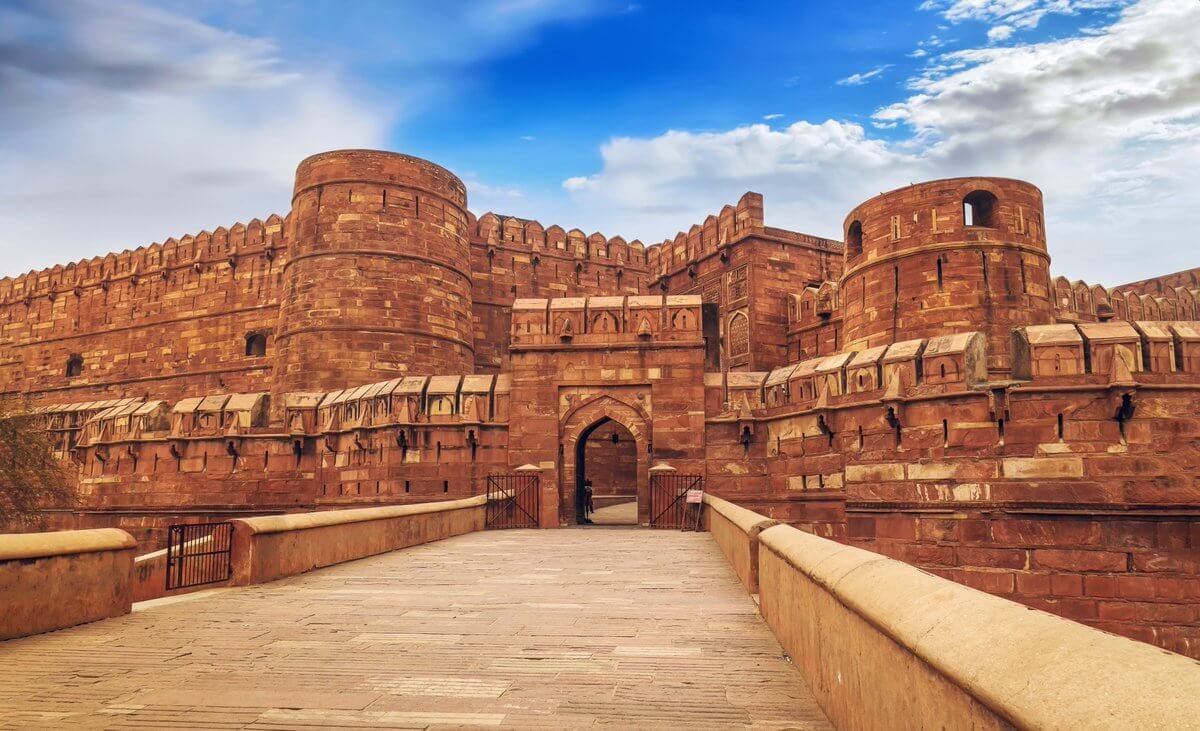Agra Fort
Tell us what you need and we will respond to your query as soon as possible!

An engineering showstopper, The Ruddy Post of Agra or Agra Post was built by Head Akbar in 1573. It is found on the proper bank of the Waterway Yamuna and is made totally of ruddy sandstone. The verifiable post was once the ersthwhile home of the Mughals until 1638. One of the UNESCO World Legacy Destinations, it lies 2.5 kilometers from Taj Mahal.
Moreover known as Lal –Qila, Fortification Rouge or Qila-i-Akbari, Agra Post could be a image of Agra and is so enormous that it is regularly alluded to as a walled city. It is the idealize case of Mughal craftsmanship and engineering, built purely out of ruddy sandstone. Within the premises of Agra Post lie the foremost lovely structures just like the Pearl Mosque, Diwan-i I Khas, Diwan-i I Aam, Moti Masjid and Jahangiri Mahal. A few portion of the Agra Fortification is utilized by the Indian Armed force is off-limit to open get to. See of Yamuna Waterway and Taj Mahal from the fort's structures is mind-stirring.
One of the primary structures merely will experience once you enter the Agra Post through the Amar Singh Door is the Jehangir Mahal. Jehangir was Akbar's child and the following in line to run the show the Mughal realm after his father. The Jehangir Mahal was built by Akbar as a women's quarters and was developed adjoining to the chambers of his top pick ruler Jodha Bai. Basic in its plan, the Jehangir Mahal is built in stone and has Persian verses carved out flawlessly in a expansive stone bowl utilized for putting away rose water.
Another critical structure within the Agra Fortification is the Khas Mahal, which has a few classical Persian and Islamic impacts with a touch of Hindu themes in its development. It was the emperor's resting chambers or 'Araamgah'. Its one of a kind highlight is its lovely works of art on the marble surface.
Towards the cleared out of the Khas Mahal lies the Musamman Burj, which was moreover built by Shah Jahan. Octagonal in shape, this tower has an open structure which permitted the cool evening breeze to stream right through it. This was the put where Shah Jahan went through his final days while he looked out over to to the tomb of his adored spouse, the Taj Mahal.
One of the foremost wonderful developments within the Agra Fortification, the Sheesh Mahal could be a 'harem' or dressing room that utilizes the foremost modern water building plans. The interior of this development is flawlessly brightened with a mosaic of horde little mirrors, thus giving it its title.
To the proper of the Sheesh Mahal lies the Diwan - I - Khaas, which was a lobby particularly for private gatherings of people. It is complicatedly enhanced with marble columns that are studded with botanical designs of semi - precious stones. Adjoining to this can be the Mammam-E-Shahi or the Shah Burj, utilized as the summer withdraw.
This was the corridor that was open to the common open. It was here that the exceptionally celebrated Peacock Position of royalty was arranged, and the room where the position of authority once utilized to be is luxuriously beautified with white marble.
This hallowed place was built by head Shah Jahan as a private mosque for the women of the court.
Moreover known as the Pearl Mosque, it is an amazingly wonderful structure arranged at Agra Post. The building of the mosque is closed to guests as of presently. Close the Moti Masjid lies the Mina Masjid, which was the private hallowed place of Head Shah Jahan.
The Agra Post is found fair 2.5 km absent from the extravagant Taj Mahal thus it may be a exceptionally great thought to combine these two goals together. The closest railroad station to the Ruddy Post of Agra is, of course, Agra Cantonment or Agra Cantt. because it is more commonly known as. On the off chance that you're a first-time voyager to Agra, get down at the station and make your way to the paid ahead of time booth in arrange to book a transport - Cab or Rickshaw - at a sensible cost. The taxi passage is more often than not between INR 200 - 300 as the remove between the station and the post is around 13 km.
Sikandar Lodi was the primary Sultan of Delhi who moved his capital from Delhi to Agra. His child Ibrahim Lodi held the post which was at that point known as Badalgarh for nine a long time until he was vanquished within the to begin with fight of Panipat. When Babur sent his child Humayun to Agra, he captured the Badalgarh Fortification and seized a endless treasure which included the celebrated Kohinoor jewel. After Humayun's vanquish to Sher Shah Suri, the Mughals misplaced the post once more. When Akbar arrived in Agra, he realized the significance of the city and made it it's capital. Akbar recaptured the remains of the Badalgarh Fortification and redesigned it with ruddy sandstone from Rajasthan. 4000 builders worked on it and it was at long last completed in 1573, after a period of 8 a long time.
Shah Jahan, who was Akbar's grandson destroyed some of the buildings within the fort to form his claim in their put, rendering the Agra Fort because it is nowadays. Towards the conclusion of Shah Jahan's life, his child Aurangzeb confined him within the fort's Muasamman Burj, which ignored the Taj Mahal.